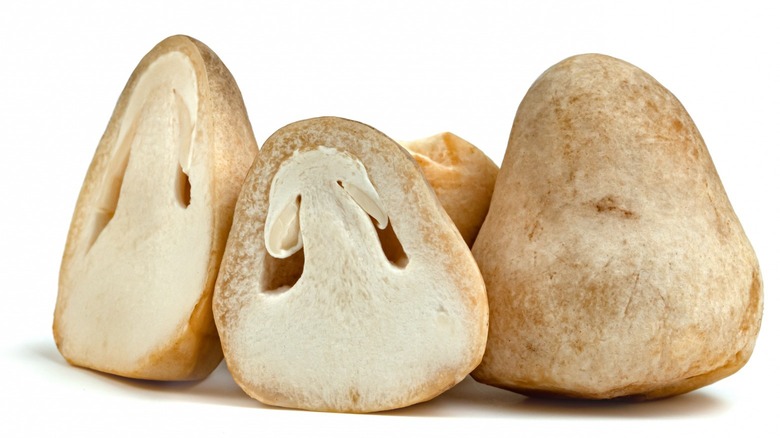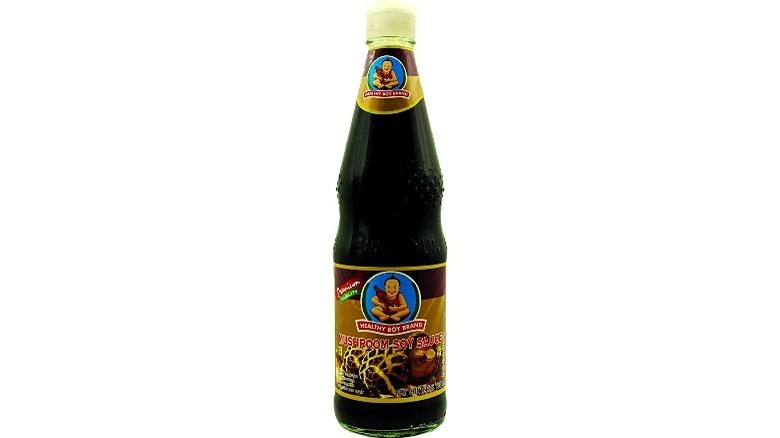Mushroom Soy Sauce Is The Ideal Vegan Solution To Fish Sauce
We may receive a commission on purchases made from links.
Each culture has a secret ingredient, a flavor bomb that elevates savory dishes and keeps the palate guessing, known as the fifth taste, umami. Traditionally, Mediterranean countries used brined anchovies to bring a salty savoriness to dishes. The British brewed anchovies and other flavorings to make Worcestershire sauce, a critical ingredient in Caesar salad dressing and Bloody Marys. And Asian cultures relied on fermented fish sauce for stir-fry and noodle dishes. Each cuisine harnessed similar ingredients uniquely.
Asian fish sauce is made from fermented anchovies and salt. Like Worcestershire sauce, it adds a layer of savoriness and depth without a fishy taste, despite the pungent smell from the jar, like the opposite of vanilla extract, which smells terrific but tastes terrible on its own. While each culture stayed in its lane for decades, chefs have introduced Asian fish sauces into foods like pizza and Italian sauces and used the condiment to wake up scrambled eggs in the morning, finally realizing the pungent ingredient can be used more than a few times a year.
While fermented fish-based sauces are indispensable flavor enhancers, since it contains fish, vegans must find another ingredient that can provide the same saltiness and funk that anchovies provide. Soy sauce is a common substitute, adding that missing element to many recipes. However, mushroom soy sauce, possibly a new pantry item for you, provides the closest flavor comparison.
A vegan flavor bomb
Mushroom soy sauce is a dark soy sauce made with soybeans and straw mushrooms, but can also be brewed with dried Chinese black mushrooms or shitake like the brand Healthy Boy Mushroom Soy Sauce does. The mushrooms add a more intense layer of savoriness than regular soy sauce without imparting a "mushroomy" flavor. A little goes a long way, so avoid cheaper brands that use artificial flavorings and spring for manufacturers that add pure mushroom extracts. The sauce is briny without being too salty and a bit smokey. However, it does carry significantly more sodium per tablespoon than regular soy sauce (1440 mg versus 879 mg).
The Chinese created soy sauce centuries ago by fermenting soybeans. As the beans break down, they release sugar and umami, turning to a liquid with deep brown color and a complex sweet, salty, and umami flavor. Soy sauce is used as a condiment for dipping, but also in marinades and during the cooking process to add a depth of flavor that isn't affected by high heat.
Traditionally, wheat is added to soy sauce, making it an issue for gluten-intolerant eaters. However, all soy sauces should be vegan. If the high sodium content is too much, there's a wide variety of soy sauce on the market, ranging from low-sodium, gluten-free (or Tamari), dark, light, and perhaps your new favorite, mushroom soy sauce.
Mushroom soy sauce can be found in specialty Asian markets and is available online at retailers like Amazon.

